pickles, sakura, tea, tsukemono
Preserved Flowers and More: What are Tsukemono?
Christian Closs
Posted on March 23, 2022
Share:
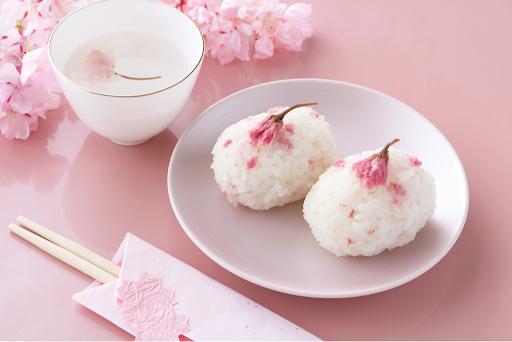
Japan’s cherry blossom trees are not just pretty; they are also deeply infused with meaning. Because of their beautiful yet fleeting nature, sakura blossoms are seen as a metaphor for life. While eagerly anticipated and celebrated, sakura’s full bloom lasts only a week. Naturally, there have been efforts to preserve the blossoms longer than that, and given Japan’s long history of pickling, it is not surprising they succeeded early on.
History of Pickles in Japan
Traditional Japanese cuisine is well known for its health benefits, and pickled food has played a role in Japanese dishes for centuries. Collectively labeled tsukemono, literally ‘things to put on’, pickles are one of the core elements of a Japanese meal. They are mostly served as side dishes to balance the flavors of rice, main dish, and miso soup.
Initially born out of a need to preserve food without refrigeration, tsukemono now mostly serves as a palate cleanser, garnish, digestive helper, and an extra dash of color for a meal. Complex, artisanal ways of pickling exist, but the most common pickling agents are very straightforward.
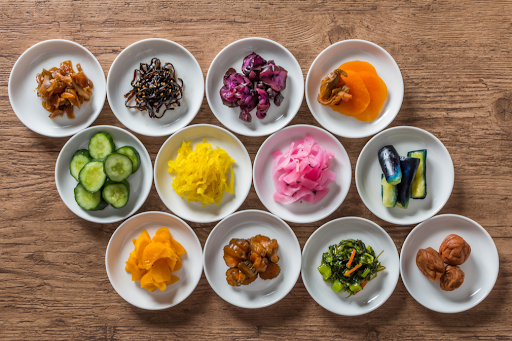
Vinegar (Suzuke)
Most commonly rice vinegar, this brine produces crunchy pickles with a sweet and sour flavor.
Rice Bran (Nukazuke)
A mixture of rice bran, salt, seaweed, and other ingredients. Whole vegetables are added to this mixture and left to cure anywhere from a single day to several months. The results are crisp, salty, and tangy pickles that are good for digestion.
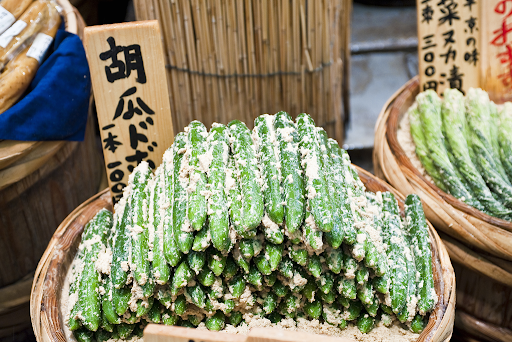
Miso (Misozuke)
Using a salty, fermented soybean paste called miso, misozuke is used for vegetables as well as meat and fish. Compared to nukazuke, the result tends to be crisp, with a distinct salty flavor.
Soy Sauce (Shoyuzuke)
Using soy sauce as a base, this pickling agent can lead to various outcomes, with flavors varying from light and crisp to dark brown and salty depending on the vegetables used.
Salt (Shiozuke)
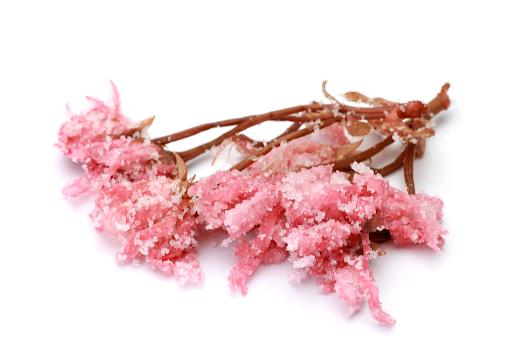
Last but not least, salt pickles are the most common. Simple to do, at their most basic, they consist of sliced, lightly salted vegetables. At the other, heavily salted end of the spectrum, there are things like extremely sour Japanese plums called umeboshi.
Looking to experience as many of Japan’s unique flavors as you can? Check out Sakuraco. Sakuraco sends you authentic Japanese snacks, sweets, teas, and tableware from local Japanese makers. Perfect for trying all Japan has to offer!
How To Pickle Cherry Blossoms?
It’s the last category that preserved Japanese cherry blossoms fall into. While the process is simple, there are still a few peculiarities to pay attention to.
While any cherry blossom can be pickled, some varieties amongst the many hundreds are better suited than others. Late blooming trees of the yaezakura variety, with their big, multi-layered, and deep pink color, are especially well suited. White blossoms can also be used but are usually not chosen for pickling.
Perhaps the biggest hurdle in procuring blossoms to pickle is finding a tree that enables you to do so. Blossoms must be picked just before full bloom for best results, meaning popular areas are off-limits. Just petals won’t be enough, so the blossom needs to be cut with a bit of stem left attached.
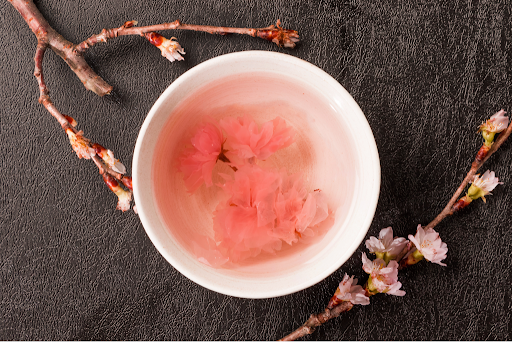
However, once the blossoms are harvested, the process is simple: Salt is massaged into the blossoms before they are left to cure underweight for several days in a pickling container. The salt will remove a fragrant liquid from the flowers that needs to be discarded before adding umezu (plum vinegar). After another few days, the vinegar can be removed, and the flowers dry. After a final sprinkle of salt, they need another few days to dry before fully consumed.
The result is unique: Notes of ume Japanese plums, salt, and a distinct floral characteristic. The blossoms pack enough flavor to brew tea out of a single one. Called sakurayu, this is a tea reserved for truly once-in-a-lifetime occasions like a wedding, and brewing it is a spectacle, as the blossom can be seen unfolding in front of your eyes.
Where can I find tsukemono?
Pickles often have a somewhat negative image in the West. Associated with strong and often sour tastes, they rarely find their way on a menu beyond sandwiches. In Japan, however, they are extremely popular, with plenty of variety available. Besides helping with balance on set meals, they are also popular as a snack together with alcohol at Japan’s many izakaya.
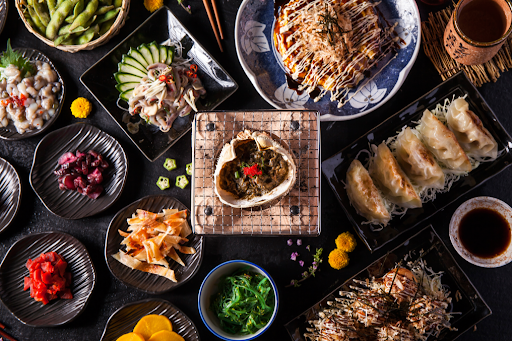
Somewhat of a cross between a bar and a restaurant, izakaya serves small portions of food and drinks. While you’re unlikely to find preserved cherry blossoms at one, there are many other tsukemono popular with diners. Japanese pickles offer a large variety, and you will come across them on your travels. They are also easy to make at home if you want to try something new. We highly recommend giving them a try. Have you tried any tsukemono before? Would you recommend it? Let us know in the comments below!
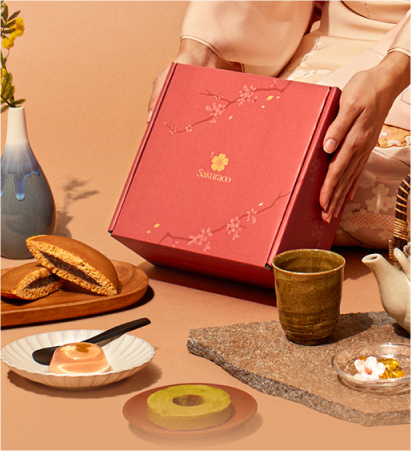
Discover authentic flavors with Sakuraco
Get Sakuraco 

Discover authentic flavors with Sakuraco
Get Sakuraco 
Related Articles
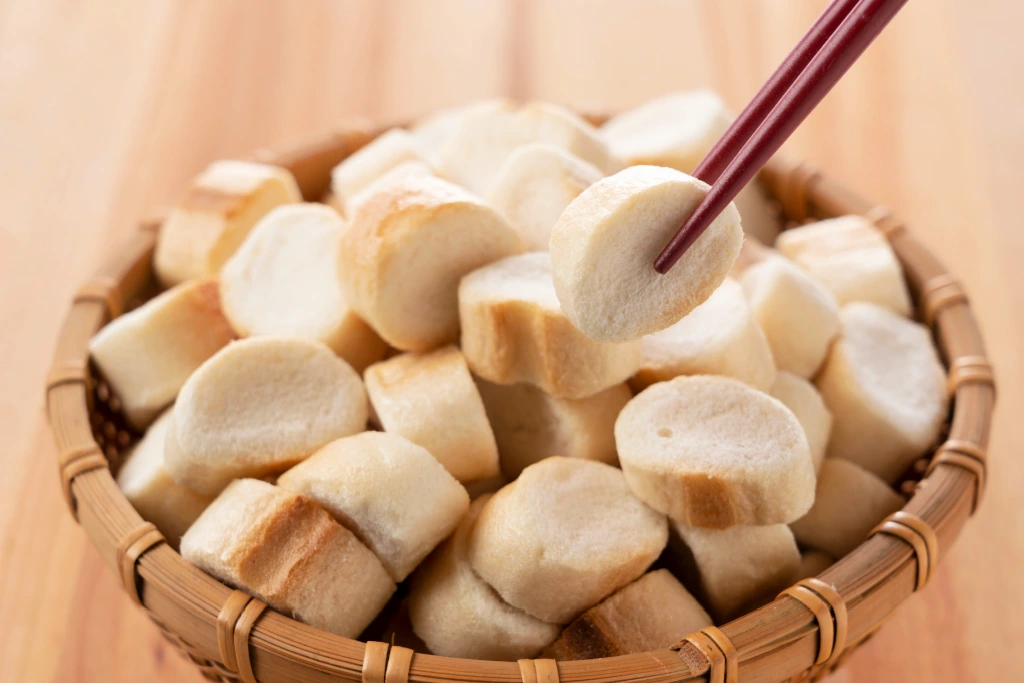
Wheat Gluten from Japan: What Is the Secret Behind Fu?
Japanese cuisine is well known for its unique ingredients that are delicious and good for health. One ingredient that plays an essential role in the traditional food culture of Japan is fu, also known as Japanese wheat gluten.
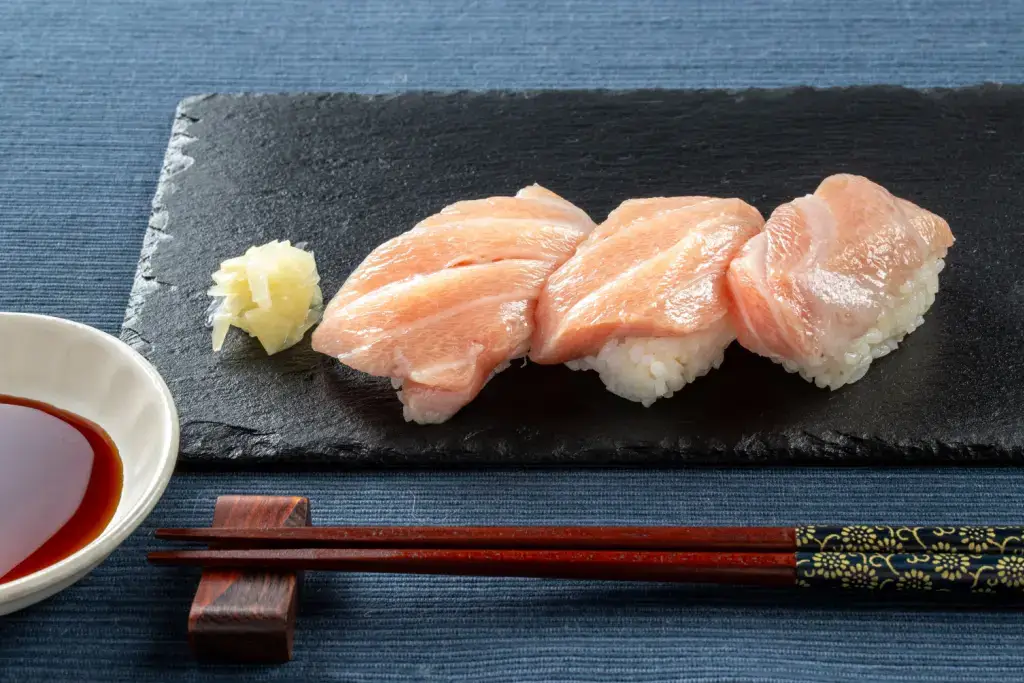
Otoro Sushi: Why Is It Worth Trying at Least Once?
Otoro sushi is one of Japanese cuisine’s most luxurious and talked-about items. This cut of tuna is considered one of the top choices for sushi lovers.
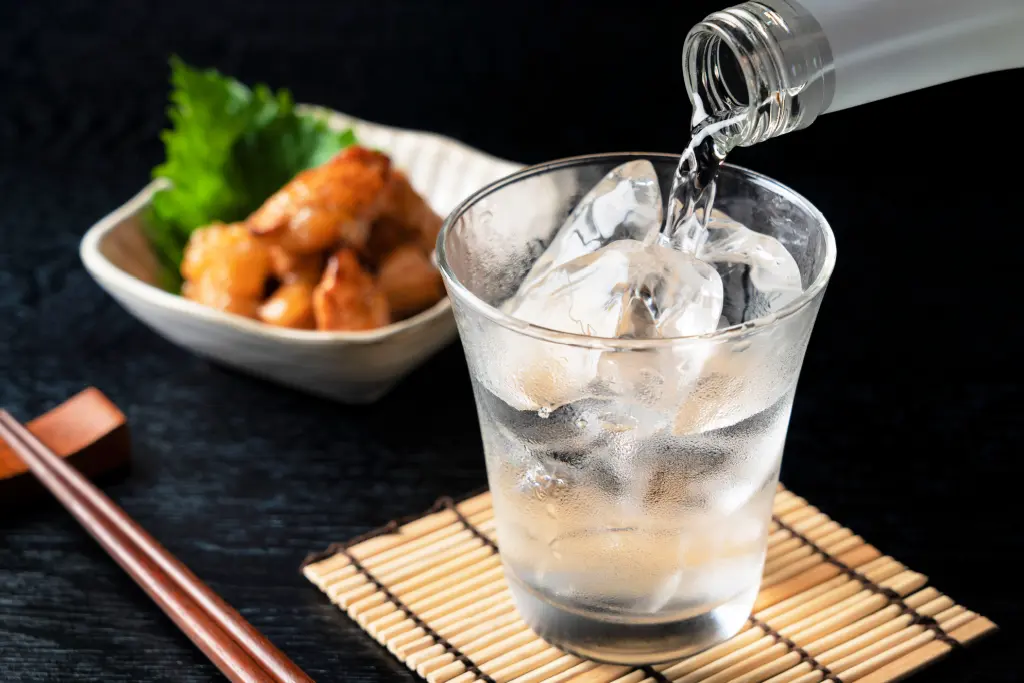
Shochu Time: Why Japan Loves This Drink
One of the most well-loved souvenirs people often think of from Japan is sake, a traditional alcoholic beverage. However, there is another type of alcohol that has become so popular in Japan that it now sells more than sake. That drink is shochu. To learn more about this special beverage, keep reading!
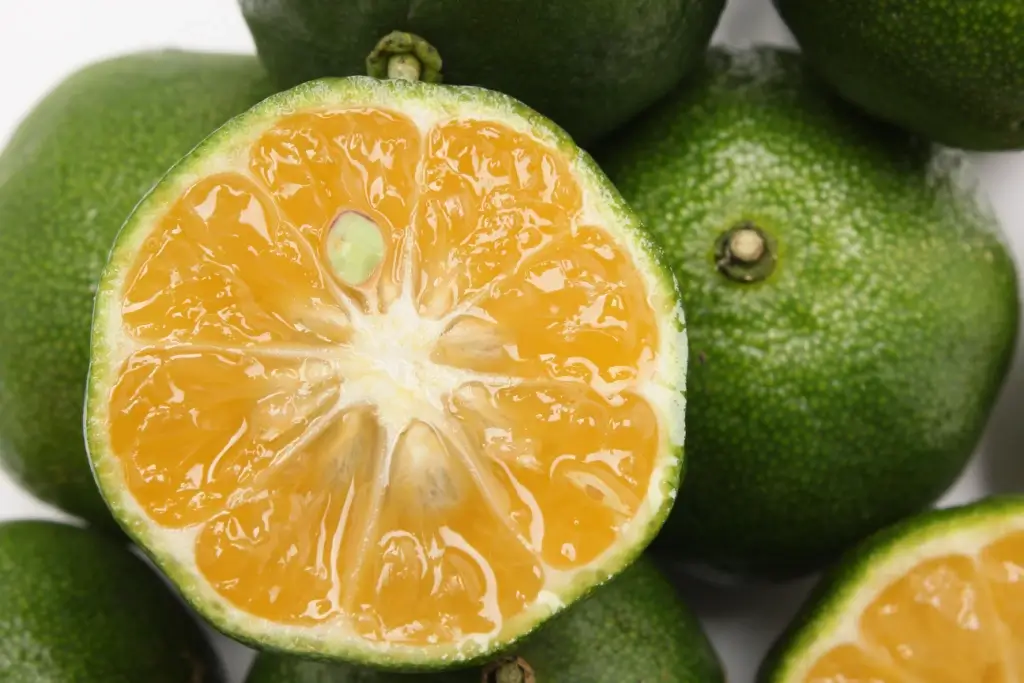
Shikuwasa: A Citrus Delight from Okinawa
In Okinawa, the fruit shikuwasa is widely used in various kinds of food and drink. Let’s explore this remarkable Okinawan fruit in more detail!



